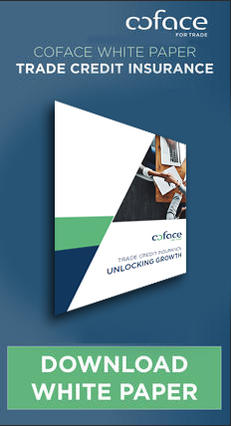Coface Country Risk Update: Large and Small Emerging Economies Experiencing Strong Turbulence

Brazil, Chile, Ecuador, Trinidad and Tobago Downgraded
Negative Watchlist Changes for Armenia, Malaysia and Tunisia
Only Positive Watchlist Change is for Hungary
Coface’s quarterly country risk Panorama forecasts that the worldwide growth rate will not exceed 3% for the fourth year in a row. While the advanced economies are doing much better, emerging countries are a major point of concern.
Activity in the USA rose significantly in the 2nd quarter due to both consumer spending and investment, prompting a 2.5% forecast for 2015. The gradual upturn in activity is also evident in the Eurozone, which is expected to grow 1.5% this year.
The emerging countries, where growth is forecast at 3.5% in 2015 and 4.2% in 2016, are suffering from weak raw material prices and the fall in exchange rates against the dollar. In a number of larger emerging countries (China, Turkey, South Africa), activity slowed down or went into recession (Russia and Brazil). The recent Chinese stock market collapse and its consequences on raw material prices have only intensified these weaknesses.
Small Emerging Economies Dragged Down by Larger Ones
The worsening macroeconomic situation in the large emerging countries has caused a rising risk level in several smaller countries.
- Malaysia (A2 – negative watch). Dependent on external demand, Malaysia is suffering as a result of the slowdown in the Chinese economy (one of its main trading partners) and the fall in raw material prices. The high levels of household debt and public debt are also a risk.
- Armenia (C – negative watch).The country is under negative watch because of its economic and financial dependence upon Russia, its political instability and a sharp deterioration in public finances.
- Tunisia (B – positive watch removed).The country faces a strong likelihood of going into recession following the economic blow dealt by the terrorist attacks, particularly in the tourism sector. The continuing terrorist risk and the increase in social tensions have erased the initial positive effects of the political transition.
Latin America: Four Downgrades
Latin America (forecast of a 0.2% recession in 2015) underwent a new wave of downward revisions in assessments.
- Brazil (B - downgrade).Brazil’s economy is in recession (-2.5% growth forecast for 2015), in a setting of increased political instability. Investments and household consumer spending, the main driver of growth, both fell, notably given the repercussions of the Petrobras affair.
- Ecuador (C – downgrade).This country is the second hardest-hit by the fall in the price of oil (40% of budget revenues, over 50% of exports), which is having an impact on public spending and investment. The prospects for local private companies are looking worse due to tariff disagreements with Colombia and Peru. The economy is highly dependent upon Chinese capital, from which loans are secured through the award of mining concessions, oil revenues and future electricity production.
- Chile (A3 – downgrade).Chile is suffering from the sustained fall in copper prices and the slowdown in China, the main destination for Chile's copper. Corruption scandals are destabilizing the business environment.
- Having recovered from recession in 2012 and enjoying a favorable business climate,Trinidad and Tobago(A4 – downgrade), is suffering from the negative effects of the continuing low oil prices.
Contact
Annie Lorenzana
COMMUNICATIONS MANAGER
North America
MOB: +1 (407) 221-3496
Annie.Lorenzana@coface.com








